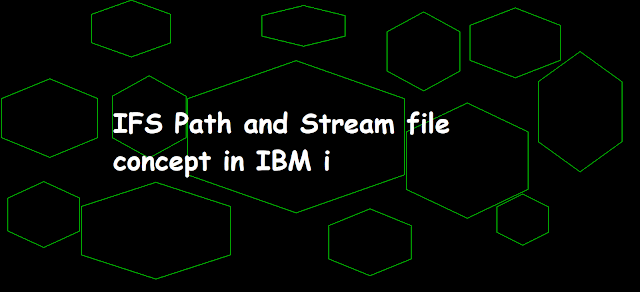 |
| IFS Path and Stream file concept in IBM i |
What is the IFS path?
IFS path tells the system how to access an object. Individual directories and the object name are separated by a slash (/) character. For example:
/home/EASYCLASS/helloworld
Here, we use CL command WRKLNK to access any object on the IFS.
Two ways of locating the IFS path
Absolute IFS path
An absolute pathname begins at the highest level, or “root” directory (which is identified by the / character). It specifies each and every directory or its subdirectory to locate an object.
Relative IFS path
If the pathname does not begin with the / character, the system assumes that the path begins at your current directory. This type of pathname is called a relative pathname.
DSPCURDIR command
The Display Current Directory (DSPCURDIR) command is used to display the name of the current working directory.
Display Current Working Directory
Directory . . . . . . : /home/EASYCLASS
Here, my Current Working Directory named /home/EASYCLASS.
What is a Stream file?
A stream file is a randomly accessible sequence of bytes, with no further structure imposed by the system. Documents that are stored in your system's folders are stream files.
FLR Folder
JOBD Job description
JOBQ Job queue
LIB Library
LIND Line description
MSGQ Message queue
OUTQ Output queue
PGM Program
SBSD Subsystem description
STMF Stream file
SYMLNK Symbolic link
USRPRF User profile
EDTF command to create stream file
Edit File (EDTF)
Type choices, press Enter.
Stream file, or . . . . . . . . STMF /home/easyclass/testfile1
Data base file . . . . . . . . . FILE
Library . . . . . . . . . . . *LIBL
Here, Use Edit File (EDTF) to edit a file 'testfile1'.